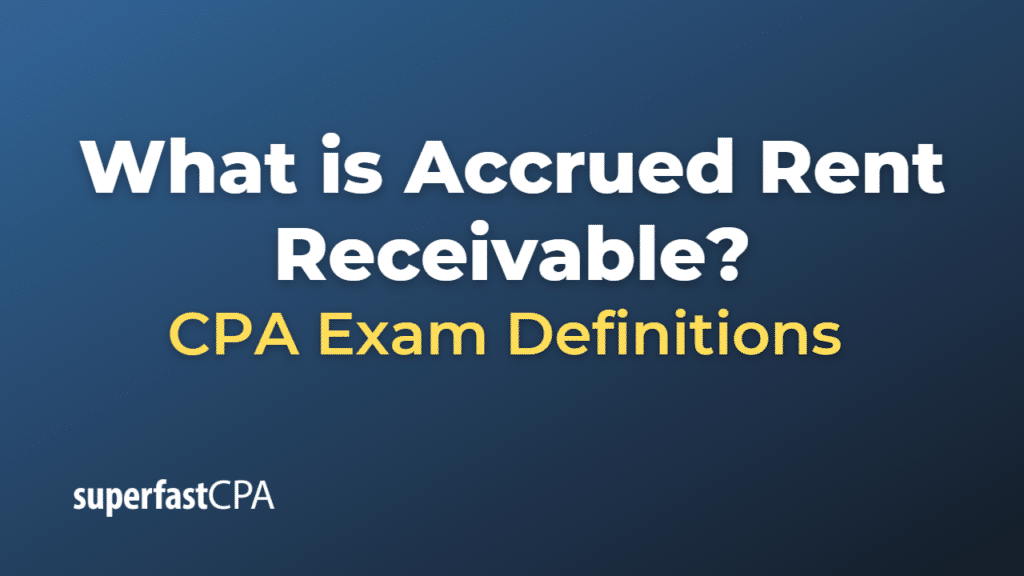Accrued Rent Receivable
Accrued rent receivable is an accounting term that refers to the amount of rent a property owner or landlord has earned but has not yet received from a tenant. This receivable arises when a tenant has used a rented property during a specific accounting period but has not yet paid the rent for that period. Accrued rent receivable is commonly found on a property owner’s balance sheet and represents the expected cash inflow from the tenant’s rent payment.
In the accrual basis of accounting, revenues are recognized when they are earned, not when they are received. This means that accrued rent receivable must be recorded in the financial statements for the period during which the rent revenue is earned, even if the payment has not yet been received.
To record accrued rent receivable, a property owner would make a journal entry at the end of the accounting period debiting the accrued rent receivable account and crediting the rent revenue account. Once the rent is received, the property owner would reverse the receivable and increase the cash account with a corresponding journal entry.
Example of an Accrued Rent Receivable
Imagine a landlord who owns an office building and rents out a space to a tenant for $5,000 per month, payable on the 5th of the following month. The landlord’s accounting period ends on December 31st, but the tenant’s rent payment for December is due on January 5th. To recognize the accrued rent receivable, the landlord would record the following journal entry on December 31st:
Debit: Accrued Rent Receivable – $5,000 Credit: Rent Revenue – $5,000
This entry records the rent revenue for the period and the accrued rent receivable on the balance sheet. When the tenant pays the rent on January 5th, the landlord would record the following journal entry:
Debit: Cash – $5,000 Credit: Accrued Rent Receivable – $5,000
By recording the accrued rent receivable, the landlord ensures that their financial statements accurately reflect their financial performance and cash flow expectations for the accounting period, providing a clearer picture of their financial health for management, investors, and other stakeholders.













